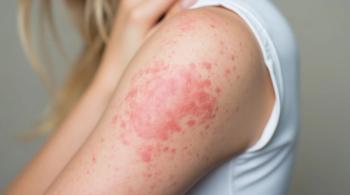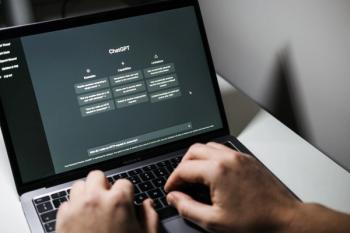
Preventing Wheezing/Asthma Attacks in Preschool Children
Researchers found no evidence that initiation of inhaled corticosteroids or leukotriene receptor antagonist therapy is associated with fewer wheezing/asthma attacks than therapy with a short-acting ß-agonist alone in preschool children with recurrent wheezing/asthma.
Researchers found no evidence that initiation of inhaled corticosteroids (ICS) or leukotriene receptor antagonist (LTRA) therapy is associated with fewer wheezing/asthma attacks than therapy with a short-acting ß-agonist (SABA) alone in preschool children with recurrent wheezing/asthma.
The study by Jonathan Grigg, MD, and colleagues,
Acute episodes of asthma-like symptoms are common in preschool children, affecting as many as a one-third to half of children in the United States and Western Europe at least once in their first 6 years. But international asthma management guidelines provide little definitive guidance for recurrent attack prevention in preschoolers. The investigators sought to compare outcomes for a broad general UK population of preschool children with evidence of prior wheezing who remained on either as-needed SABA or stepped up to controller therapy (plus as-needed SABA), as either ICS or LTRA. The investigators also compared outcomes with the 2 controller therapies (ICS vs LTRA) and investigated whether extrafine (EF)-particle ICS is associated with better outcomes than fine-particle ICS.
The researchers used electronic health records from the United Kingdom’s Optimum Patient Care Research Database, which contains anonymized, longitudinal medical record data for 2.5 million patients, to conduct a matched cohort analysis using 4 two-way matched comparisons:
- All ICSs by pressurized metered-dose inhaler (pMDI) versus SABA
- LTRA versus SABA
- LTRA versus all ICSs by pMDI
- EF-particle ICS vs fine-particle ICS by pMDI
The matched ICS and SABA cohorts included 990 and 3,960 preschool children (ages 1 to 5), respectively (61% male, mean age 3.2 years); matched LTRA and SABA cohorts included 259 and 1036 children, respectively (65% male, mean age 2.6 years). The children had 2 or more episodes of wheezing during 1 baseline year before first prescription (index date) of ICS or LTRA, or repeat prescription of SABA. Children initiating ICS or LTRA on the index date were matched 1:4 to those prescribed only SABA for age, sex, year of index prescription, mean baseline SABA dose, baseline attacks, baseline antibiotic prescriptions, and eczema diagnosis. Wheezing/asthma attacks (defined as asthma-related emergency department [ED] attendance, hospital admission, or acute oral corticosteroid [OCS] prescription) during 1 outcome year were compared using conditional logistic regression.
The researchers found no significant differences in the odds of wheezing/asthma attacks during the outcome year in any of the 4 treatment comparisons, including ICS versus SABA, LTRA versus SABA, LTRA versus ICS, and EF-particle ICS versus fine-particle ICS; or between matched cohorts of preschool children with 2 or more prior episodes of wheezing and/or OCS prescriptions. The only statistically significant difference observed during the outcome year may not be clinically significant in light of other findings and the few children affected, the study authors wrote—namely 2% versus 1% of children with an ED visit in the ICS versus SABA cohorts, respectively.
“One possible explanation for our findings is that there is genuinely no effect of any of these agents with regard to preventing wheezing/asthma attacks in preschool children with intermittent disease,” the researchers wrote. Watchful waiting, in conjunction with as-needed symptoms management, may be the best approach for many children with preschool wheeze. The approach should not preclude the assessment of several clinical factors that could suggest responsiveness to ICS or LTRA, especially for children who have evidence of symptoms between more severe episodes.
The study authors said their findings underscore the need for better understanding of disease patterns and better targeting of existing therapies, or new therapeutic modalities, as well as the need for real-world data on adherence, atopic status, and emerging biomarkers. “In the absence of better tools to help target treatments, and in light of improved outcomes over time in all cohorts, these data suggest that a ‘wait-and-see-approach’ for many preschool children with intermittent disease may be a clinically prudent approach.”
Grigg and many of the study coauthors report honoraria and fees from pharmaceutical companies including GlaxoSmithKline, AstraZeneca, Regeneron, Merck, Sanofi, Mylan, Pfizer, Boehringer Ingelheim, Novartis, and Johnson and Johnson.
Reference
Grigg J, Nibber A, Paton JY, et al., on behalf of the Respiratory Effectiveness Group. Matched cohort study of therapeutic strategies to prevent preschool wheezing/asthma attacks. J Asthma Allergy. 2018;11:309-321.
Newsletter
Stay ahead of policy, cost, and value—subscribe to AJMC for expert insights at the intersection of clinical care and health economics.















































